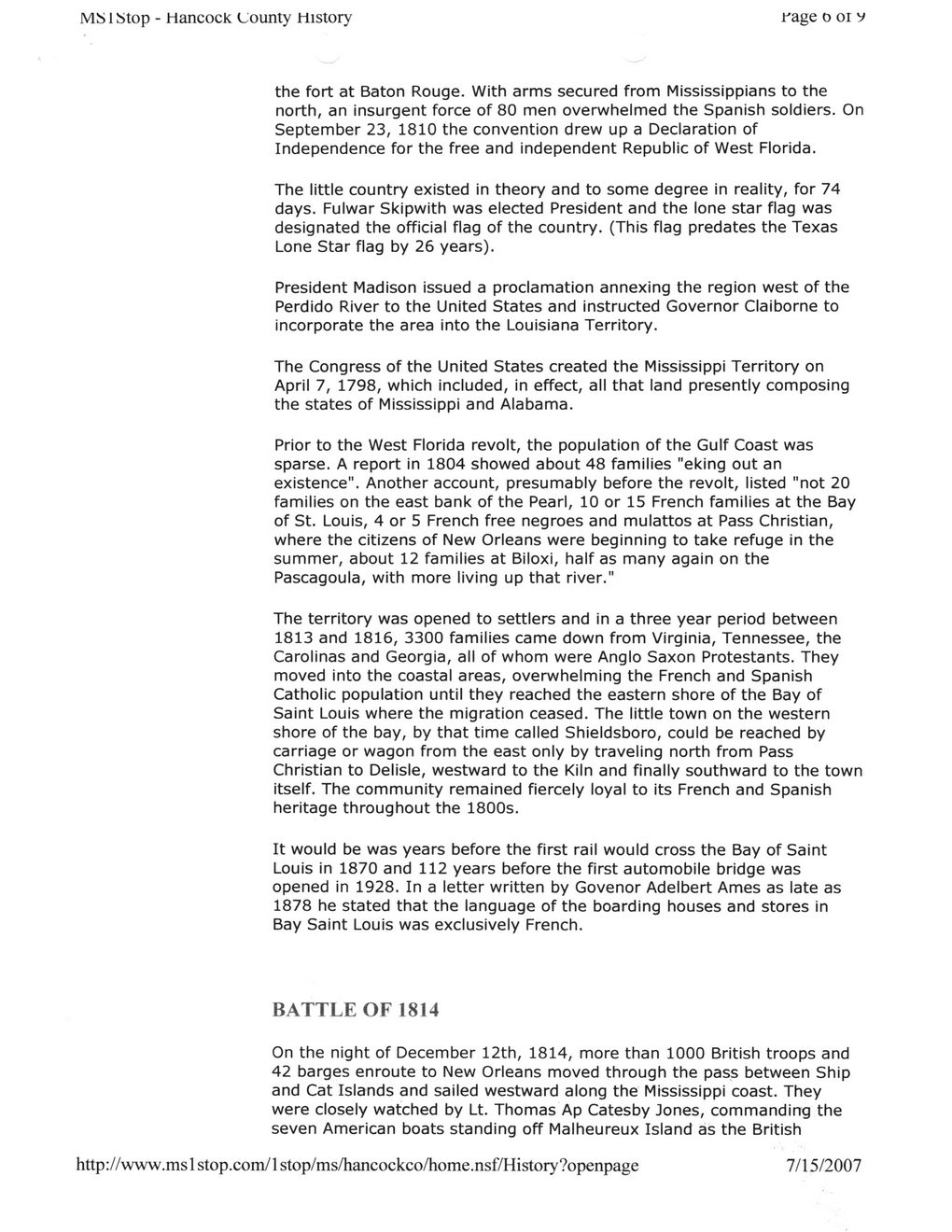This text was obtained via automated optical character recognition.
It has not been edited and may therefore contain several errors.
MS 1 Stop - Hancock County History rage o or y the fort at Baton Rouge. With arms secured from Mississippians to the north, an insurgent force of 80 men overwhelmed the Spanish soldiers. On September 23, 1810 the convention drew up a Declaration of Independence for the free and independent Republic of West Florida. The little country existed in theory and to some degree in reality, for 74 days. Fulwar Skipwith was elected President and the lone star flag was designated the official flag of the country. (This flag predates the Texas Lone Star flag by 26 years). President Madison issued a proclamation annexing the region west of the Perdido River to the United States and instructed Governor Claiborne to incorporate the area into the Louisiana Territory. The Congress of the United States created the Mississippi Territory on April 7, 1798, which included, in effect, all that land presently composing the states of Mississippi and Alabama. Prior to the West Florida revolt, the population of the Gulf Coast was sparse. A report in 1804 showed about 48 families "eking out an existence". Another account, presumably before the revolt, listed "not 20 families on the east bank of the Pearl, 10 or 15 French families at the Bay of St. Louis, 4 or 5 French free negroes and mulattos at Pass Christian, where the citizens of New Orleans were beginning to take refuge in the summer, about 12 families at Biloxi, half as many again on the Pascagoula, with more living up that river." The territory was opened to settlers and in a three year period between 1813 and 1816, 3300 families came down from Virginia, Tennessee, the Carolinas and Georgia, all of whom were Anglo Saxon Protestants. They moved into the coastal areas, overwhelming the French and Spanish Catholic population until they reached the eastern shore of the Bay of Saint Louis where the migration ceased. The little town on the western shore of the bay, by that time called Shieldsboro, could be reached by carriage or wagon from the east only by traveling north from Pass Christian to Delisle, westward to the Kiln and finally southward to the town itself. The community remained fiercely loyal to its French and Spanish heritage throughout the 1800s. It would be was years before the first rail would cross the Bay of Saint Louis in 1870 and 112 years before the first automobile bridge was opened in 1928. In a letter written by Govenor Adelbert Ames as late as 1878 he stated that the language of the boarding houses and stores in Bay Saint Louis was exclusively French. BATTLE OF 1814 On the night of December 12th, 1814, more than 1000 British troops and 42 barges enroute to New Orleans moved through the pass between Ship and Cat Islands and sailed westward along the Mississippi coast. They were closely watched by Lt. Thomas Ap Catesby Jones, commanding the seven American boats standing off Malheureux Island as the British http://www.msl stop.com/1 stop/ms/hancockco/home.nsf/History?openpage 7/15/2007

Hancock County A-Touch-of-History-(6)